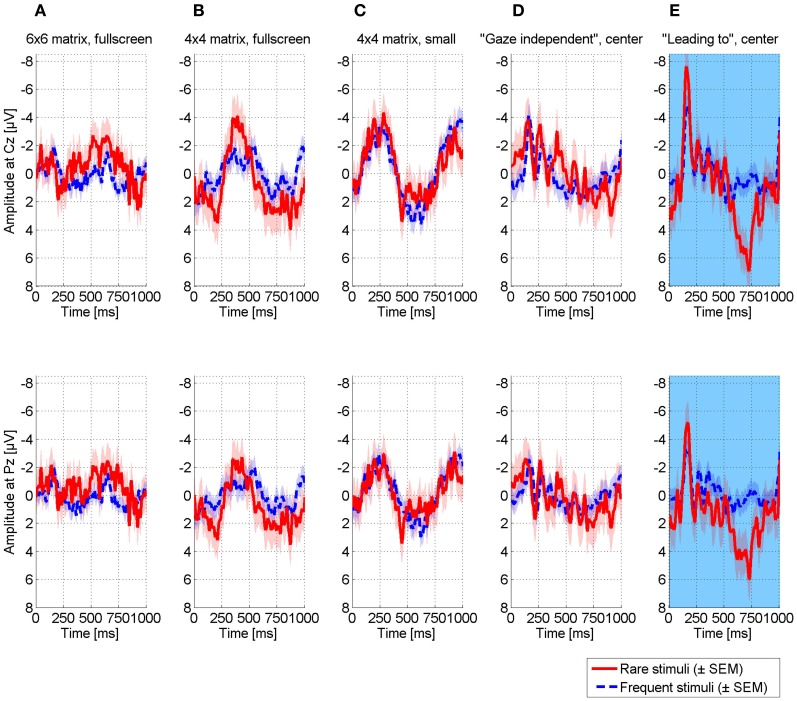Figure 6.
Comparison of ERPs elicited in different visual BCI paradigms, exemplarily illustrated for electrode Cz (upper row) and Pz (lower row). (A) 6 × 6 matrix presented in fullscreen, (B) 4×4 matrix presented in fullscreen, (C) 4×4 matrix presented at smaller size in the center of the screen, (D) “Gaze independent” speller, characters were presented in the center of the screen (E) “Leading to” gaze independent speller, similar to the gaze independent speller except for the target stimulus that was replaced by a face stimulus. Neither matrix based paradigms (A-C), nor a gaze-independent paradigm (D) led to reliable differences between target and non-target stimulations. To investigate potential sources why the gaze-independent paradigm did not work, we conducted one run in which the target character was replaced with a face (E). This paradigm is similar to the visual oddball and differed only with regard to the non-target stimuli. As this paradigm elicited pronounced ERPs that compared to the visual oddball, we assume that identification of a character in a plethora of presented characters may be aggravated and sufficient gaze control may be required.

